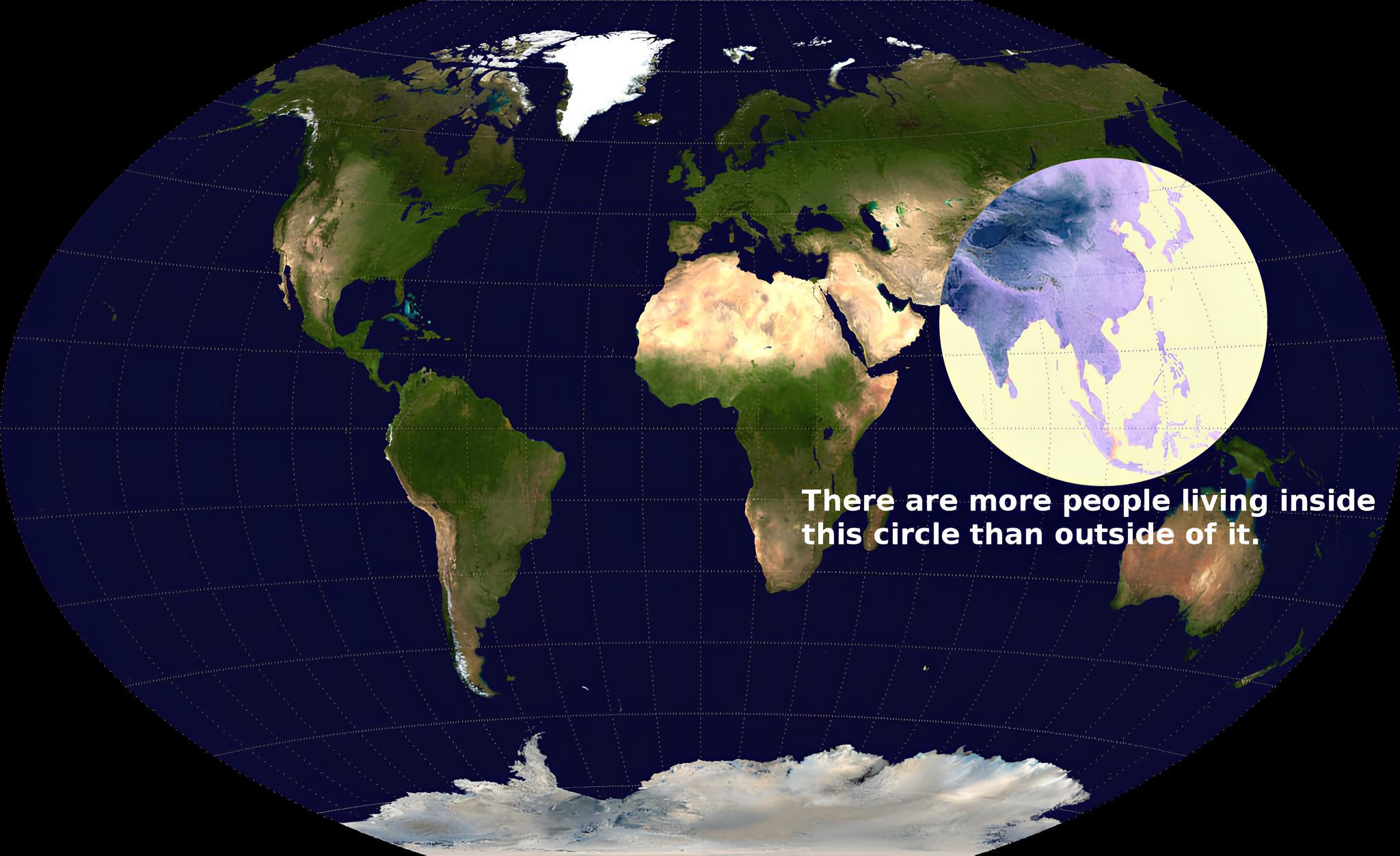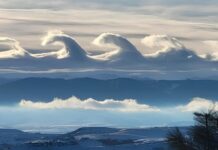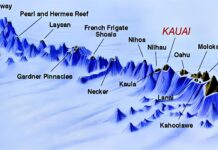There are fascinating facts and unexpected statistics all across the world. One fascinating discovery is that there are more people living within a given circle than outside of it. This circle covers not just a sizable population but also a variety of noteworthy qualities and characteristics.
Looking at the map, it is clear that the circle contains several intriguing characteristics. For starters, Nepal is home to Mount Everest, the highest mountain on the planet, which reaches breathtaking heights. In addition, the Mariana Trench, the deepest known point in any ocean, is located within this circle. These geographical landmarks add to the circle’s allure.
Furthermore, the circle is home to sizable religious populations. It has a higher proportion of Muslims, Hindus, and Buddhists than the rest of the country. The complex tapestry of faiths found in this region reflects the cultural and religious variety of these regions. While the circle has these religious groups, it is worth noting that there are still more Christians and Jews living outside its borders.
When the population distribution within the circle is examined, it becomes clear that it contains several of the world’s most populous countries. This circle includes China, India, Indonesia, Pakistan, Bangladesh, and Japan, which are the world’s first, second, fourth, sixth, seventh, and tenth most populated countries. Their combined populations greatly contribute to the concentration of people in this region.
Notably, Mongolia is located within the circle and is the least sparsely inhabited country on the planet. Mongolia, with its vast terrain and limited population, provides an interesting contrast inside the densely populated circle.
However, it is critical to recognize that the map’s circular portrayal may not precisely reflect the true shape of the Earth. The Winkel-tripel projection is utilized, and there are distortions as with any map projection. While the circular form is not a perfect portrayal of reality, it is used to illustrate the concentration of inhabitants inside a given area.
The map was adjusted to produce a more realistic circle. This redesigned circle, centered at 106.6° East and 26.6° North, incorporates Japan and India while exchanging sea space for more land. As a result, the circle encompasses a bigger population than the prior representation. The revised circle includes sections of Afghanistan, Kazakhstan, Tajikistan, and Kyrgyzstan, as well as the densely populated regions of Uzbekistan and a major but sparsely populated piece of Siberia.
It’s worth noting that all map projections have intrinsic distortions, and this one is non-conformal. The goal of this portrayal is not to condemn, but rather to throw light on population concentration within a given location, providing an intriguing viewpoint on world demography.
Finally, the fact that more people live inside a specific circle than outside of it provides an intriguing glimpse into the world’s population distribution. This circle includes significant geographical characteristics, different religious populations, and some of the world’s most populous countries. While the map projection utilized is not a precise portrayal of the Earth, it does provide a thought-provoking view of the concentration of mankind inside a defined space.






